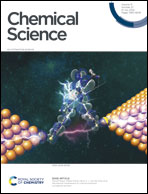Ligand-dependent, palladium-catalyzed stereodivergent synthesis of chiral tetrahydroquinolines†
Abstract
The most fundamental tasks in asymmetric synthesis are the development of fully stereodivergent strategies to access the full complement of stereoisomers of products bearing multiple stereocenters. Although great progress has been made in the past few decades, developing general and practical strategies that allow selective generation of any diastereomer of a reaction product bearing multiple stereocentres through switching distinct chiral catalysts is a significant challenge. Here, attaining precise switching of the product stereochemistry, we develop a novel P-chirogenic ligand, i.e.YuePhos, which can be easily derived from inexpensive and commercially available starting materials in four chemical operations. Through switching of three chiral ligands, an unprecedented ligand-dependent diastereodivergent Pd-catalyzed asymmetric intermolecular [4 + 2] cycloaddition reaction of vinyl benzoxazinanone with α-arylidene succinimides was developed. This novel method provides an efficient route for the stereodivergent synthesis of six stereoisomers of pyrrolidines bearing up to three adjacent stereocenters (one quaternary center). Despite the anticipated challenges associated with controlling stereoselectivity in such a complex system, the products are obtained in enantiomeric excesses ranging up to 98% ee. In addition, the synthetic utilities of optically active hexahydrocarbazoles are also shown.



 Please wait while we load your content...
Please wait while we load your content...